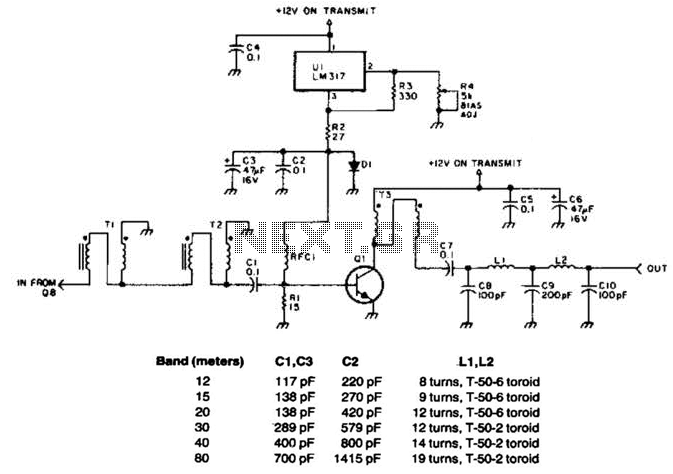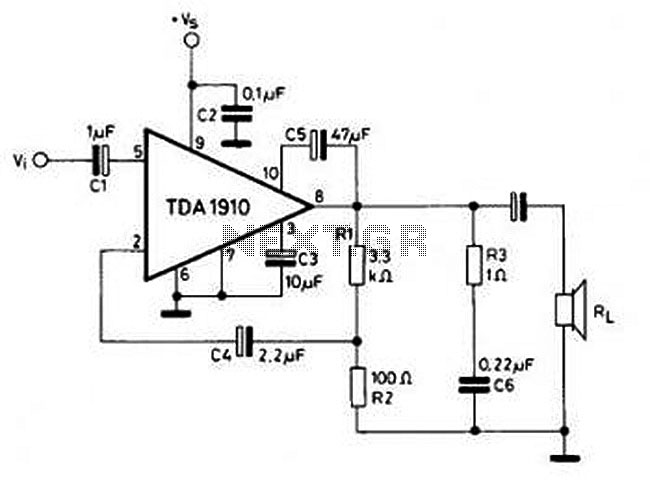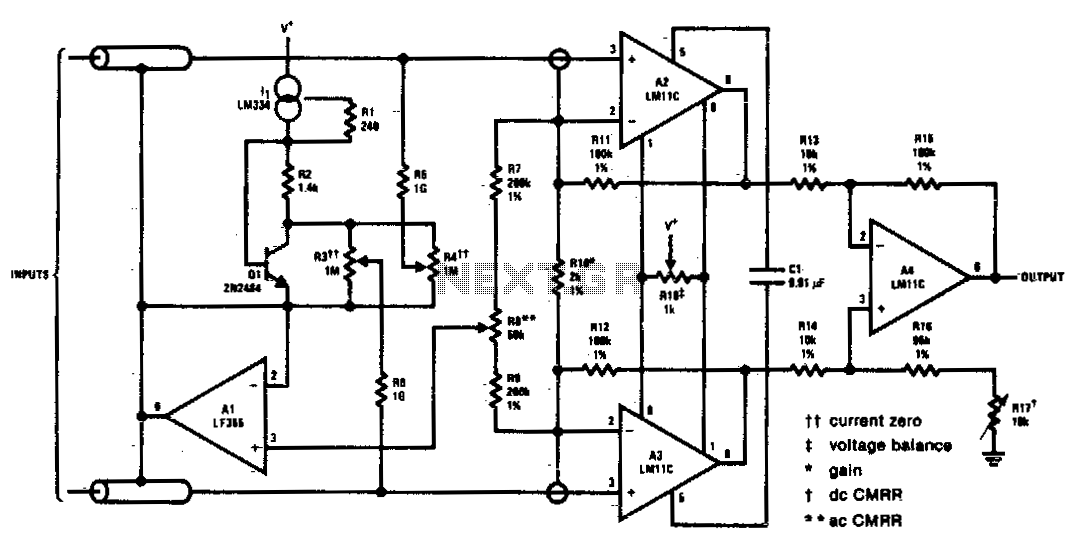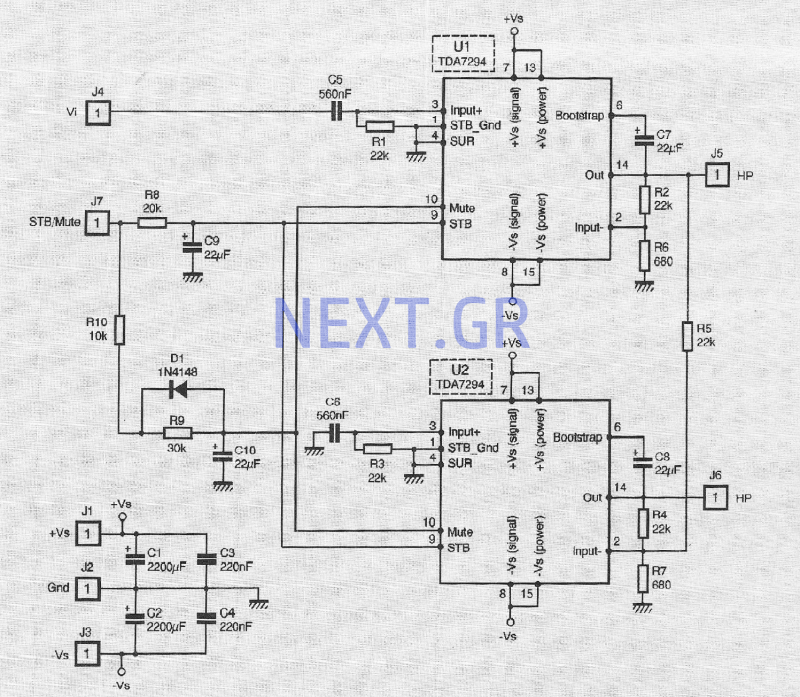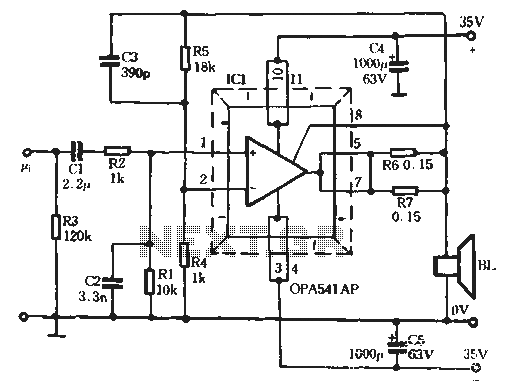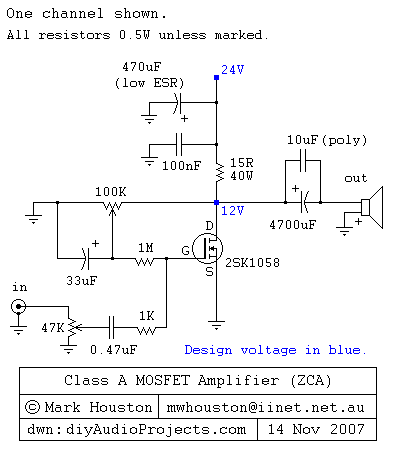
12V/20W Stereo Amplifier
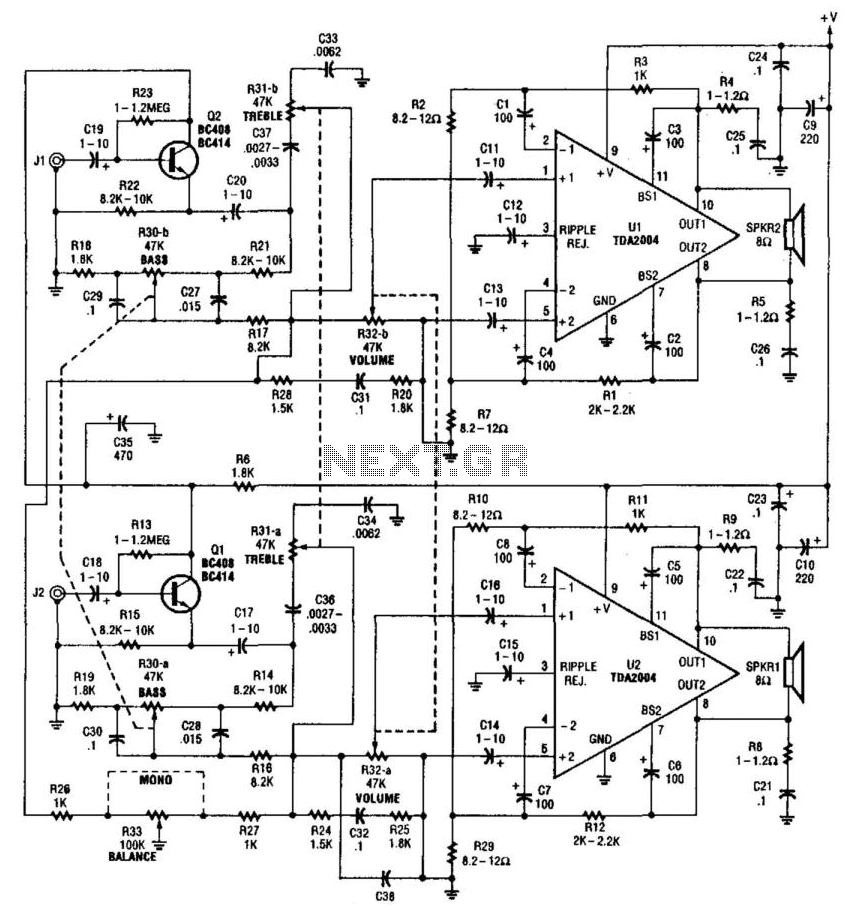
This amplifier delivers 20 W per channel with an input sensitivity of approximately 300 mV into a 47 kΩ load. It utilizes a bridged output configuration, allowing the speakers to be operated with both wires above ground. A +12 V power supply is required, and components U1 and U2 must be equipped with heat sinks.
The described amplifier circuit operates in a bridged configuration, which effectively doubles the voltage across the load, resulting in increased power output to the speakers. This configuration requires careful attention to ensure that both output terminals are above ground potential, which is critical for safe operation and to prevent short circuits.
The input sensitivity of 300 mV indicates the minimum voltage required at the input to achieve the rated output power of 20 W per channel. This specification is particularly important for compatibility with various audio sources, ensuring that the amplifier can be driven adequately without distortion.
The use of a +12 V power supply is standard for many audio amplifiers, as it provides a sufficient voltage level while maintaining a manageable heat output. However, the specification that components U1 and U2 must be heatsinked is crucial, as these components likely handle significant power dissipation during operation. Proper thermal management will enhance the reliability and longevity of the amplifier.
In terms of circuit design, it is essential to include adequate bypass capacitors near the power supply pins of the amplifier ICs to filter out noise and stabilize the voltage supply. Additionally, appropriate feedback networks should be implemented to ensure linear operation and minimize distortion.
Overall, this amplifier circuit is designed for efficient audio amplification with a focus on performance and reliability, making it suitable for various audio applications where moderate power output is required. This amplifier delivers 20 W per channel. Input sensitivity is about 300 mV into 47 kii. Notice that a bridged o utput is used, so the speakers are operated with both wires above ground. A +12-V supply is used. U1 and U2 must be heatsinked. 🔗 External reference
The described amplifier circuit operates in a bridged configuration, which effectively doubles the voltage across the load, resulting in increased power output to the speakers. This configuration requires careful attention to ensure that both output terminals are above ground potential, which is critical for safe operation and to prevent short circuits.
The input sensitivity of 300 mV indicates the minimum voltage required at the input to achieve the rated output power of 20 W per channel. This specification is particularly important for compatibility with various audio sources, ensuring that the amplifier can be driven adequately without distortion.
The use of a +12 V power supply is standard for many audio amplifiers, as it provides a sufficient voltage level while maintaining a manageable heat output. However, the specification that components U1 and U2 must be heatsinked is crucial, as these components likely handle significant power dissipation during operation. Proper thermal management will enhance the reliability and longevity of the amplifier.
In terms of circuit design, it is essential to include adequate bypass capacitors near the power supply pins of the amplifier ICs to filter out noise and stabilize the voltage supply. Additionally, appropriate feedback networks should be implemented to ensure linear operation and minimize distortion.
Overall, this amplifier circuit is designed for efficient audio amplification with a focus on performance and reliability, making it suitable for various audio applications where moderate power output is required. This amplifier delivers 20 W per channel. Input sensitivity is about 300 mV into 47 kii. Notice that a bridged o utput is used, so the speakers are operated with both wires above ground. A +12-V supply is used. U1 and U2 must be heatsinked. 🔗 External reference
Warning: include(partials/cookie-banner.php): Failed to open stream: Permission denied in /var/www/html/nextgr/view-circuit.php on line 713
Warning: include(): Failed opening 'partials/cookie-banner.php' for inclusion (include_path='.:/usr/share/php') in /var/www/html/nextgr/view-circuit.php on line 713
